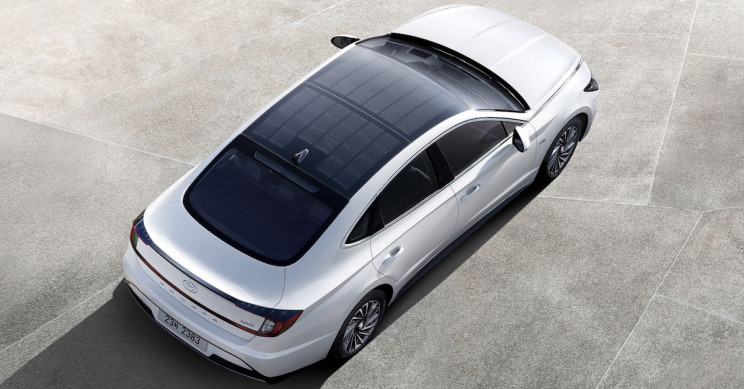Hyundai Unveils Solar Roof Charging Car That Replenishes up to 60% of Battery

Hyundai has released a new version of its hybrid car, Sonata, with solar panels on the roof that allow for the battery to be recharged even while driving.
The Korean car manufacturer claims that between 30 and 60 percent of the car’s battery can be charged by the solar panels.
Solar charging
In a statement by Hyundai, the Korean car makers say the panels can provide enough energy to “increase drivers’ travel distance by an extra 1,300 km annually.”

While Hyundai states that the solar roof system “plays a supporting role” to its hybrid engine, they see it as a test for potential all-electric models of the future.
In the same statement, Hyundai says that the new Sonata is on sale in Korea and will soon be available in North America. However, no plans are currently in place to sell this model in other regions.
A price has yet to be stated for the solar roof-equipped Sonata.
Is this the first-ever solar roof car?
To put it simply, no — as the BBC reports, optional sun-powered charging systems are available for the Toyota Prius and the luxury Karma Revero.
Dutch startup Lightyear is also working on Lightyear One, an all-electric car (pictured below) that uses solar panels on its roof and bonnet and promises ranges of up to 800 km.

Lightyear does state that ranges will be lower in the winter, which raises doubts about this method’s effectiveness in regions that see more annual cloud cover.
The Dutch company says it wants to “leapfrog” the slow-pace of electric vehicle infrastructure building by creating a car that can operate purely on sunlight.
If this comes to be true, Lightyear might actually be ahead of the likes of Hyundai, though it doesn’t have the, more than 70 years of, experience in car manufacturing that the Korean carmaker boasts.
Source: Interesting Engineering
